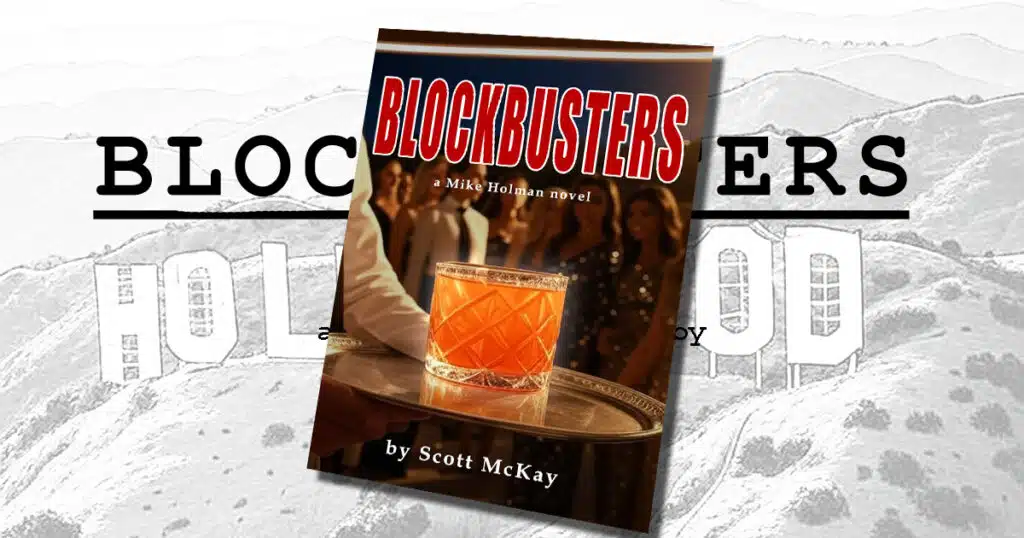
Does Scott McKay’s “Blockbusters” Predict AI’s Future In Film?
Scott McKay’s Blockbusters is a pulse-pounding techno-thriller that plunges readers into the cutthroat world of Hollywood, where journalist-turned-showbiz mogul Mike Holman leads a revolution toppling a corrupt film/TV industry, partially with the use of a revolutionary AI app called CASTR.
The app allows users to select any classic or modern film and instantly reimagine it: swap out actors with digital likenesses of stars like Brad Pitt and Angelina Jolie in an AI-generated remake of Casablanca, for example, toggle between color and black-and-white, and generate a fully voiced, high-resolution, recast and reimagined version of any existing movie streamed in under an hour.
And that’s just the beta version. The full rollout of CASTR can generate a feature-length film from a script, but it can also replace many of the mundane details of filmmaking by adjusting lighting, change actors’ facial expressions and redub lines, add backgrounds and extras and countless other things which lower the barriers to, and costs of, filmmaking.
McKay weaves this tech into a narrative of Hollywood corruption and the heightening ideological battle in Western culture, making the novel a page-turner with sharp social commentary.
At its core, CASTR embodies the book’s speculative vision of AI democratizing filmmaking, bypassing studios’ gatekeepers and empowering creators to remix content without massive budgets or legal hurdles.
But how realistic is this?
In 2025, generative AI tools are rapidly bridging the gap between fiction and reality. Platforms like OpenAI’s Sora 2 and Google’s Veo3 enable text-to-video generation, producing cinematic clips with lifelike motion, expressions, and physics from simple prompts.
Runway’s Gen-3 Alpha and Kling AI excel at creating high-fidelity scenes, including 3D reconstructions for consistent character movement, much like CASTR’s actor-swapping algorithms.
Real examples abound: AI has been used to de-age actors in films like The Irishman, and tools like HeyGen create hyper-realistic avatars for marketing videos, replacing traditional shoots.
Even full AI-generated shorts are mainstream, as seen in the MIT AI Film Hack, where adoption of video gen tools jumped to over 50% by 2025.
But CASTR’s seamless full-movie recasting pushes beyond current limits. Today’s tools handle short clips of under a minute effectively, but struggle with feature-length consistency, narrative depth, and IP rights—issues McKay astutely highlights as plot drivers.
Ethical concerns echo real debates: AI “actors” like Tilly Norwood spark backlash over job displacement, with unions fearing widespread replacement of performers.
McKay’s portrayal is predictive, foreseeing AI’s dismantling of Hollywood’s monopoly, as Forbes notes shrinking demand for traditional talent.
Tools like Pika 2.1 now offer 1080p outputs with scene integration, hinting at scalable full films soon.
Deloitte predicts cautious studio adoption for scripting and production, aligning with CASTR’s disruptive potential.
Blockbusters isn’t just entertainment—it’s a prescient warning and celebration of tech’s role in creativity. McKay’s conservative lens critiques industry “wokeness” while championing innovation, making CASTR a metaphor for reclaiming cultural narratives. At 296 pages, it’s a brisk read packed with twists, ideal for fans of Michael Crichton or tech-savvy thrillers. Highly recommended for anyone pondering AI’s future in entertainment.




